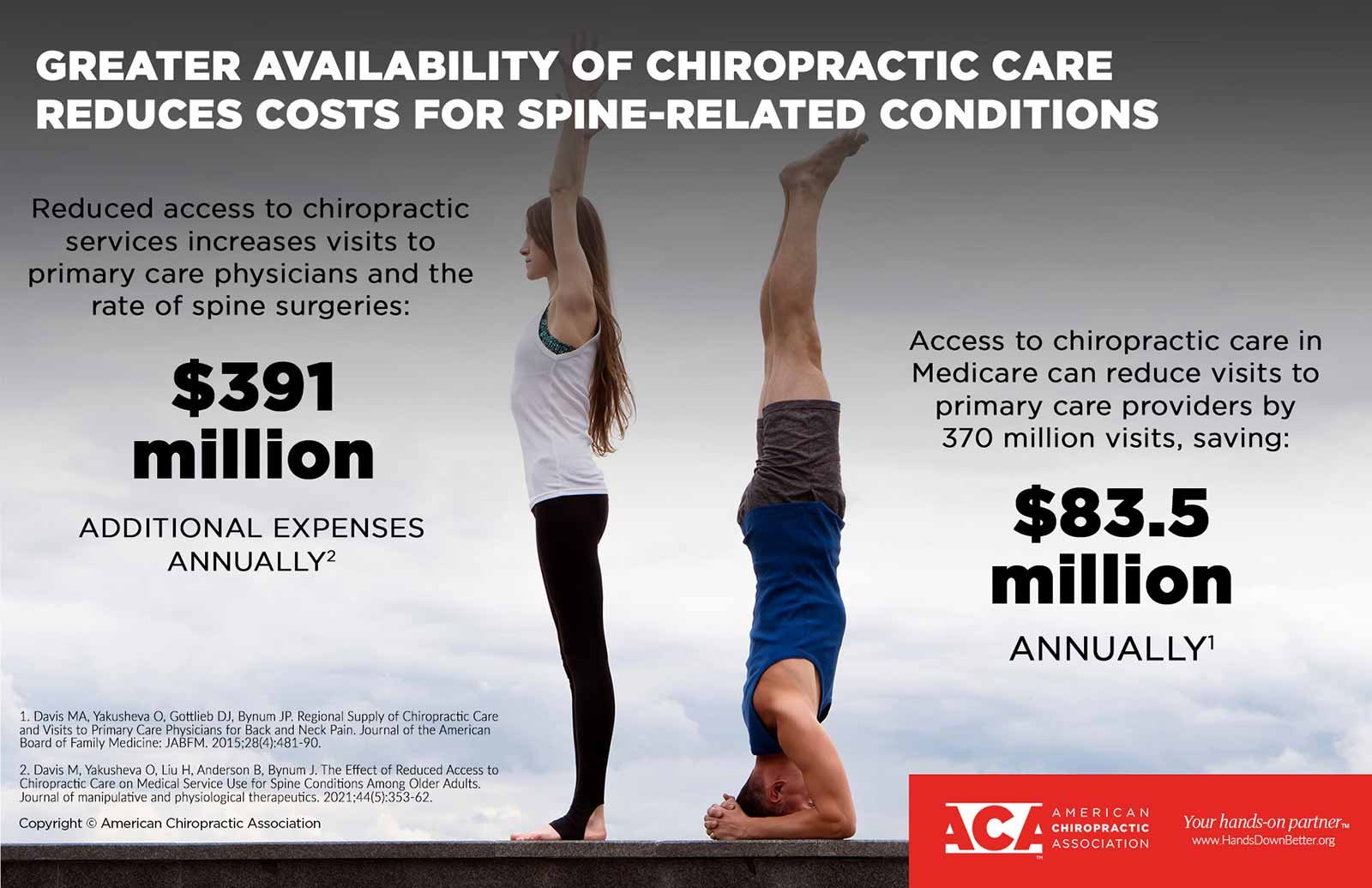Wellness Care
Wellness Care is Important
Chiropractic’s non-drug approach is on the frontline for pain management, offering evidence-based treatments that are safe and effective and that may help some patients to reduce or eliminate their dependence on prescription opioids.
What makes Chiropractic different? It’s the broad base of tools that chiropractors pull in. Ranging anywhere from nutrition to lifestyle to body mechanics to ergonomics. The broad scope of our knowledge base and tools is extremely unique. Also, it’s that deep-down philosophy of going after the root problem. It’s important to get the person out of pain, but it’s more important to help them understand what might prevent it from coming back—to make sure you’re taking care of the whole person, not just the symptom. Those two things make chiropractors and chiropractic distinctive and special.
Chiropractic is a profession, not a treatment or technique. Chiropractors provide holistic non-drug treatments, primarily focusing on neuromusculoskeletal (NMSK) diseases and disorders, utilizing a patient-centered approach. This allows for increased focus on the individual that is suffering from a condition, rather than the condition and its symptoms that just happen to be attached to an individual, as the American medical field practices.
How do I keep joints in good shape?
The movements that you perform on a daily basis are critical to long-term joint health, as are proper nutrition, a healthy exercise regimen and a healthy lifestyle. Proper lifting is also important.
Moving a joint through its full range of motion serves several important purposes. Joints are not supplied directly with blood as are other organs within the body, so the saying “Use it or lose it” applies to joint function.
Most joints in the body are lined with cartilage—a firm but pliable tissue that covers the surfaces of the bones that make up the joint. Cartilage within a joint is nourished by synovial fluid, which is “forced” into the joint cartilage through a process called imbibition.
The pressure within the joint providing nourishment to the cartilage occurs only when joint movement happens. This is why movement is critical to joint health. Grinding of bone on bone without a cartilage covering leads to degenerative joint disease, tearing up the bones and creating cysts, bone spurs and excess bone production.
A spinal disc is made up of two parts: a larger, outer-most, more ligament-like portion called the annulus fibrosis, and an inner gelatinous portion called the nucleus pulposus. These two structures are primarily fluid- or water-based, and they also rely on movement and imbibition for their nourishment. Therefore, movement in the spine is also critical to the health of the spinal joints.
Proper diet and nutrition also contribute to joint health by providing the joints with enough healthy nutrients for long-term stability and resistance to wear and tear. A healthy lifestyle – one that is free from tobacco products and other toxins – helps to ensure proper blood supply to tissues surrounding joints and speeds up the healing of joint injuries when they occur.

How are joints injured?
Most of the injuries to joints occur because abnormal stresses are placed on a normal joint. A joint can be injured acutely from a single traumatic event, like an ankle sprain. The ankle joint is protected by ligaments on the inside and outside. When the ankle moves excessively inward, the ligaments on the outside of the joint are torn. The ankle swells, leading to bruising and pain. In some cases, small pieces of bone and cartilage may be torn away. Fracture of the tibia and/or fibula (ankle bones) can also occur.
Other joint injuries are called repetitive-stress injuries or cumulative-trauma disorders. These injuries occur when relatively small abnormal stresses are repeatedly placed on normal joints. The stresses placed on joints by poor posture, poor joint position during the performance of a task, and/or poor workstation ergonomics make these joints more likely to be injured.
How can I prevent joint injuries?
There are three basic principles that are especially important when considering the impact of proper joint movement:
When lifting an object, be sure that the largest muscles in the area perform the task. The larger the muscle or muscle group utilized for lifting, the less stress placed on smaller, more vulnerable muscles and the joint itself.
During any activities, you should be able to comfortably assume several different postures, to avoid staying in one posture for extended periods. Muscles will fatigue and joints are more likely to be injured when you hold a particular posture, especially a poor one, such as staying partially bent forward at the waist.
When performing tasks, keep the joints that are being used either in their neutral posture or approximately halfway into their range of motion. Working with your joints at the extremes of their ranges of motion for prolonged periods places abnormal stress on those joints and can result in repetitive-stress injuries.

When lifting heavy objects, follow these simple suggestions:
- When lifting anything from the floor, keep the spine straight and lift with the legs.
- Do not bend over at the waist and lift primarily with the muscles of the low back. Your body is more easily injured in this position.
- Keep the object being lifted close to your body.
- Keep your elbows flexed.
- Keep your head up and your neck straight as you lift.
If you experience pain, consult your Doctor of Chiropractic. Chiropractors are uniquely trained to treat common musculoskeletal conditions, including low back pain, neck pain and joint pain. They can also help you choose proper rehabilitation exercises and prevention techniques to get you back on your feet and reduce the likelihood of future injuries.
“By the Numbers: Musculoskeletal Injuries.” The Burden of Musculoskeletal Diseases in the United States. U.S. Bone and Joint Initiative, www.boneandjointburden.org.




